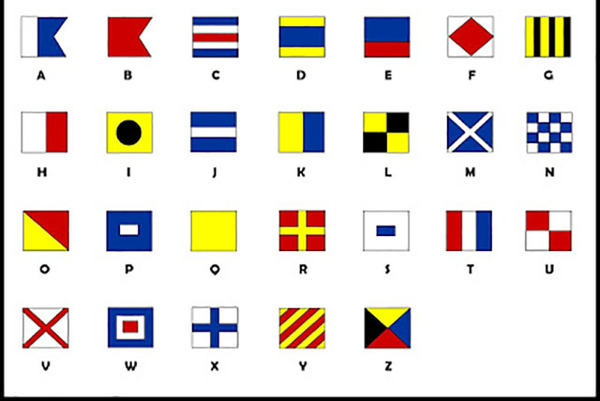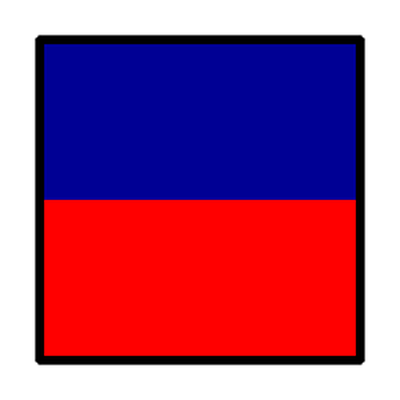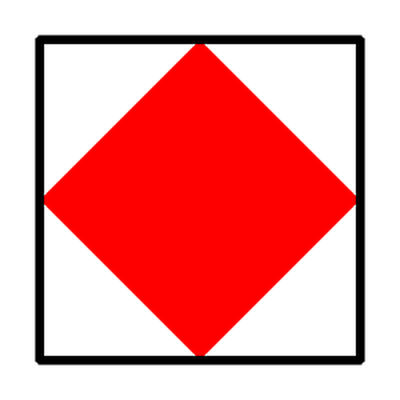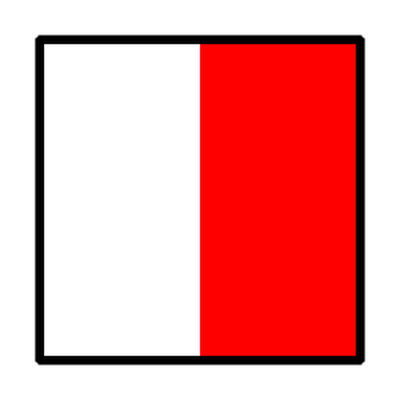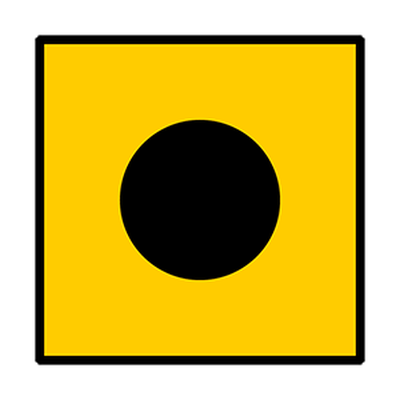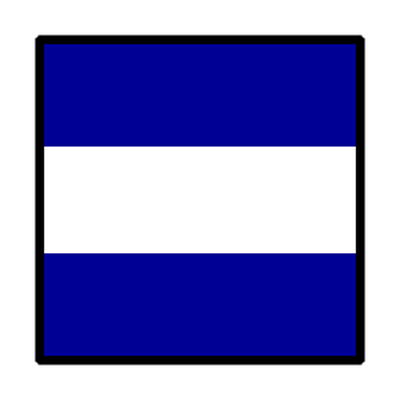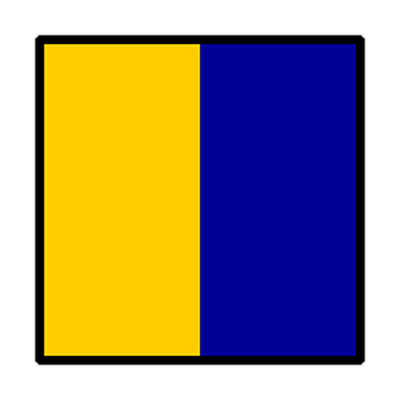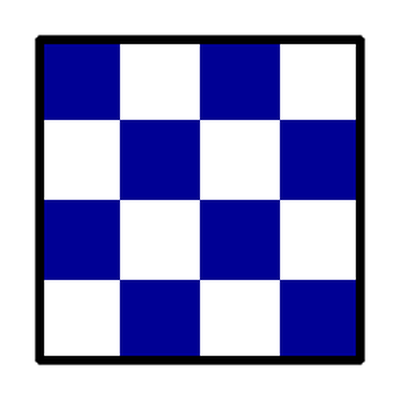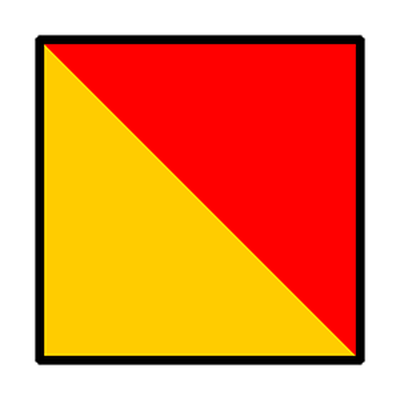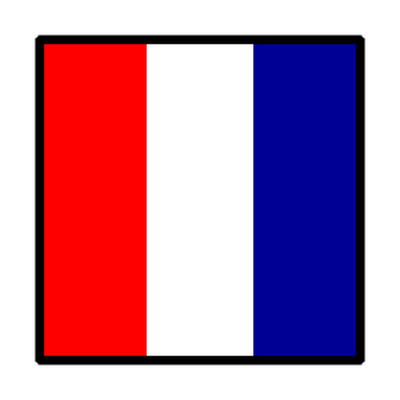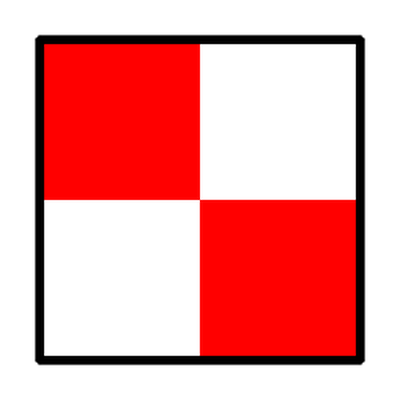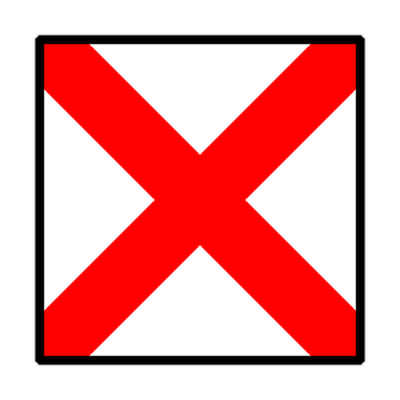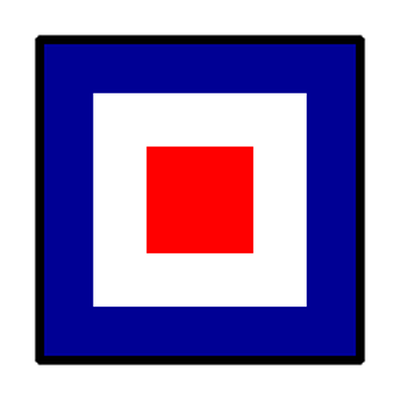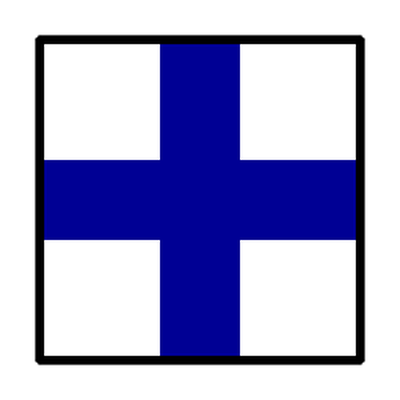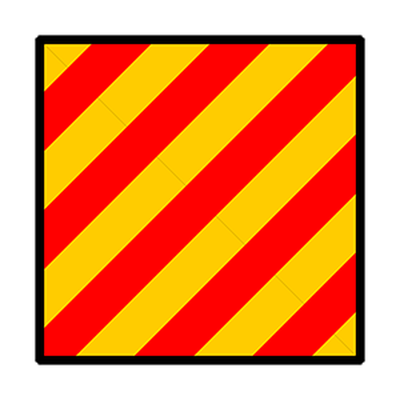
The FAFB A to Z of Nautical, Fishing and Boat Terms Explained
by FAFB
6th April 2019
Every industry has its own lingo and the commercial fishing sector is no different. In some ways, the language used can be more oblique with some nautical terms being derived from ancient times. We’ve tried to put together a reference guide for those of you who might be coming fresh to this area and also included many of the terms you might find being used in some of the ads of our site? For instance, do you know exactly what the term ‘Beam’ means and how this differs to the phrase ‘Abeam’?
As a fun aside, we’ve used the Nautical Flag Alphabet to illustrate this piece.
A - Alpha
-
Abeam: At right angles to the keel or centreline of a boat but not onboard the boat
-
Active Gears: A fishing method which moves through the water (including Seines and Trawls) as opposed to Passive Gear methods which are left in place to catch fish.
-
Aft: Toward the stern of the boat.
-
Ahead: Used in navigation and meaning a forward’s direction.
-
Aloft: Generally used when referring to rigging but means anything above the Deck.
-
Amidships: In or toward the centre of the boat.
-
Anti-Fouling: A routine maintenance job that protects the hull of a boat.
-
Astern: The opposite of Ahead, meaning the back of the boat.
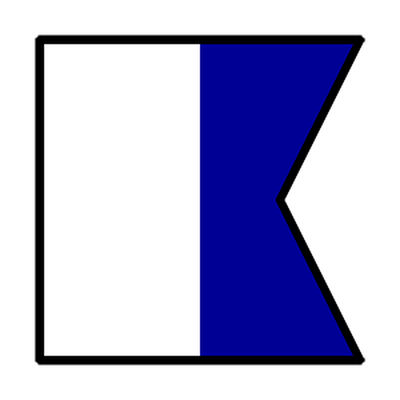
B - Bravo
-
Ballast: Referring to ay weight which is added to a boat to enhance the stability.
-
Beam: - The measurement of a boat taken at its widest point.
-
Below: Beneath Deck.
-
Benthic Species: Marine life that lives at the bottom of the sea such as flatfish, nephrops and some crustaceans.
-
Berth: Has two meaning; one refers to the sleeping area on board a boat and the other refers to a place where a boat is moored.
-
Bilge: The lowest area of a boat, typically where water is prone to collect.
-
Biomass: The size of a fish stock.
-
Biomass Limit (BLIM): The size of a fish stock below which the population is considered to be in danger of collapse; a term used by Government when calculating fishing quotas.
-
Biomass Maximum Sustainable Yield (BMSY): By contrast to BLIM, this is the size of a fish stock when it reaches a maximum growth rate.
-
Boat Hook: -A short shaft with a hook fitted to one end which can be used to recover objects or lines that have been dropped overboard. May also be used to push (or fend) off.
-
Bongo: A tub or bin for storage or A type of plankton net that can be deployed in the water.
-
Bow Line: Lines used to secure a boat in dock and which limits the movement of a vessel in the water.
-
Bow: Opposite of the stern, the Bow is the front section of a boat.
-
Bridge: The position/location from which a boat’s speed and navigation is controlled.
-
Bulkhead: A vertical and structural partition that separates compartments (usually the engine room from other areas Below which usually supports the Deck.
-
By-catch: Any species of fish or marine life that is caught by a fishing vessel that is not being targeted.
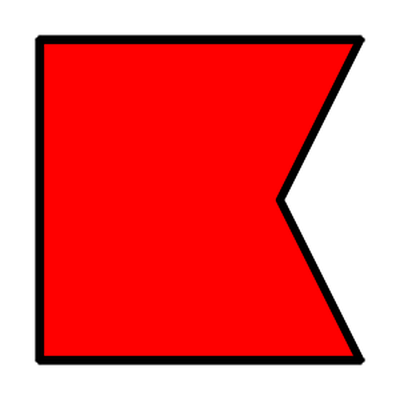
C - Charlie
-
Cabin: The enclosed area of a boat.
-
Catamaran: A vessel with two hulls (can be powered or a sail boat).
-
Centre Console: A powerboat where the helm and console is situated in a central position on the deck.
-
Chart: The name for a map used to navigate the waters.
-
Chine: The part of a boat where the hull and the bottom of the boat converge. A hull that has no chine is gradually rounded whereas a hard chine refers to an angled intersection. By contrast, a soft chine is rounded but may still have several distinct intersections.
-
Choke Species: A low volume quota species.
-
Cleat: A metal or plastic fitting used to securely attach a line.
-
Coaming: The sides, or raised edges, of a boat to deflect water/waves from entering the vessel.
-
Cockpit: Any recessed and/or semi-enclosed space that is lower than the surrounding Deck. Typically this can be seen in a Centre-console boat.
-
Cod Catch Quota Scheme (CCQS): An initiative launched by Marine Scotland and Defra in 2010 to help with the Cod Recovery Plan. Vessels that take part in the scheme were required to keep all cod that was landed irrespective of size and marketability. Participating vessel were granted extra quotas and fishing effort.
-
Cod Recovery Plan (CRP): Introduced by the European Commission in an effort to increase the Biomass of cod.
-
Cod Recovery Zone (CRZ): The area to which the Cod Recovery Plan applies.
-
Codend: The closed end of a trawl net.
-
Common Fisheries Policy (CFP): A conservation policy, introduced by the EU which outlines marine resources and the management of fishing fleets (and fisheries).
-
Companionway: An entrance that offers access to the Below areas of a boat.
-
Console: A raised area above the deck in which crew and/or passengers can stand or sit when the vessel is underway.
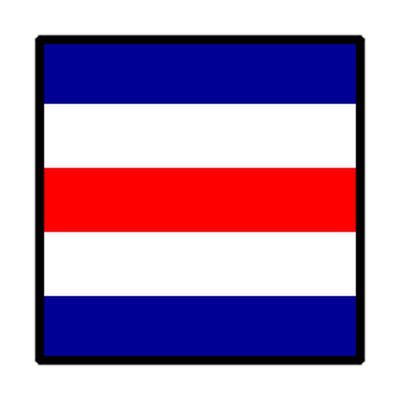
D - Delta
-
Dead ahead: To move directly ahead.
-
Dead astern To move directly Aft.
-
Deck: The flat exterior surface of a boat upon which people stand.
-
Deckhand: A member of a ship’s crew whose duties can extend to just about anything that may need to be done onboard.
-
Deep Water Fisheries: Fisheries that are located in depths of more than 400m.
-
Demersal Species: Fish that live near or on the seabed including such species as cod, whiting and haddock.
-
Discards: A term given to any fish which are thrown back into the sea after they are caught.
-
Displacement: The weight of water displaced by a boat’s hull.
Dock Line: A line made of braided or three-strand nylon designed to secure a boat along a bulkhead, to a dock, in a slip, or to another boat.
-
Dock: Either fixed or floating, a dock is a flat area (often secured to pilings) where boats can be tied up.
-
Doors: A pair of boards (either metal or wooden) that spread a trawl net horizontally.
-
Draft: The depth of penetration in the water of a boat, measured from waterline to the keel.
-
Drag: A large metal frame that is used to catch clams or scallops which is towed to scrape the seafloor.
-
Dragger: A name given to a commercial fishing vessel that uses either a dredge or a net.
-
Dredge: See_Drag_.
-
Drift nets: Extremely large (sometimes many miles wide) Gillnets that are allowed to freely drift in order to catch fish.
-
Dry Weight: The weight of a boat without fuel or water.
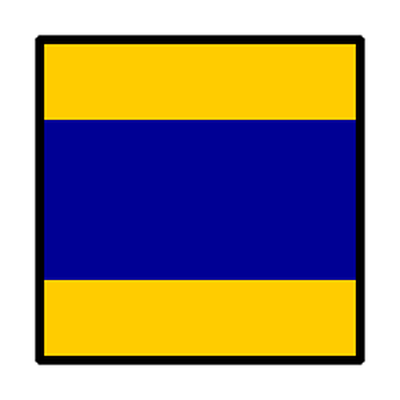
E - Echo & F - Foxtrot
-
Fathom: A measurement of six feet.
-
Fender: A ‘bumper’ attached to the exterior of the boat in order to protect it when it comes into contact with piers, pilings, docks, bulkheads, piers or other boats.
-
Finger Pier: A thin walkway that extends from a Dock dividing two slips.
-
Fixed Gear: Another name for Passive Gear referring to a stationary method of fishing using equipment such as traps, creels, lobster pots or long lines; the opposite of Active Gear.
-
FMSY/Maximum Sustainable Yield: The highest yield which can be continuously taken from the stock significantly affecting Biomass.
-
Following Sea: Wave direction sea that comes from astern and matches the direction of the boat’s heading.
-
Foredeck: The most forward part of a Deck.
-
Fore or Forward: Opposite of Aft ; towards the Bow.
-
Fouled: Term used to describe any part of the boat or equipment which is dirtied, jammed or entangled.
-
Freeboard: The distance between the top of a boat’s Gunwhales and the Waterline.
G - Golf
-
Gaff hooks: The hooks on the end of a pole used to pull fish in to the boat.
-
Galley: The kitchen area of a boat.
-
Gangway: The area of a boat where people disembark and board.
-
Gear Selectivity: A term given to the active choice of using fishing gear to avoid Bycatch and avoid non-target species.
-
Gillnetting: A technique of fishing using fine vertical nets that hang from the surface of the water.
-
Gunwale: The top edge of a boat’s hull sides.
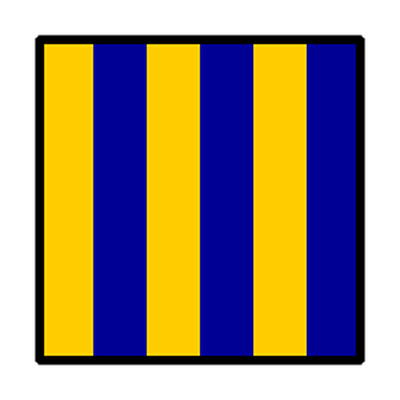
H - Hotel & I - India
-
Hang: Term used when a dredge or net is caught on something on the seafloor.
-
Harvesting: Another name give for catching fish commercially.
-
Hatch: An opening in the deck that is fitted with a sealed, watertight cover.
Hauling the net/dredge – retrieving the net/dredge to the vessel after a tow, haulback is the time when the net/dredge is being retrieved.
-
Head: The name given to the toilet onboard a boat.
-
Helm: The area of a boat where the engine controls are situated and from where the steering is undertaken.
-
Hold: A compartment below deck, used for carrying cargo or storing catch.
-
Hull: The main body of a boat; usually used to define the section of a vessel that sits in the water.
-
Inboard Engine: An engine that is mounted inside the hull.
-
Inboard: Towards the centre of a boat.
J - Juliet & K - Kilo
-
Jacobs ladder: A rope ladder that can be lowered from the deck to allow passengers to come aboard.
-
Jib: Typically the smaller of two or more sails, flown forward of the mast.
-
Keel: The lowest section of a boat’s hull in the water and the centre-line of a boat running fore and aft; it is also known as the backbone of a boat and can be an appendage to the hull which improves stability.
-
Knot: A unit of speed equal to one nautical mile per hour.
L - Lima
-
Latitude: The distance north or south of the equator measured in degrees.
-
Lee: The side sheltered from the wind.
-
Leeward: Opposited of Windward, the direction away from the which the wind is blowing.
-
Length Overall: Also known as ‘LOA’, the overall length of a boat measured from its forward-most point to its aft-most point.
-
Lifelines: Lines (or cables) used to prevent equipment, gear or people from falling overboard.
-
Locker: An area on a boat where gear can be stowed.
-
Log: A record of the course and operation of a vessel.
-
Longitude: The distance east or west of the meridian at Greenwich, England, measured in degrees.
-
Longlining: A selective fishing method where a main line is baited with multiple hooks and shorter branch lines.
-
LWL: See Waterline Length.

M - Mike
-
Mainsail: The largest sail on a sailboat.
-
Mast: A vertical pole which supports the sales on a sailboat
-
Midship: The approximate location equidistant from the stern and the bow.
-
Mooring: Any form of tying up a boat to an attachment point.
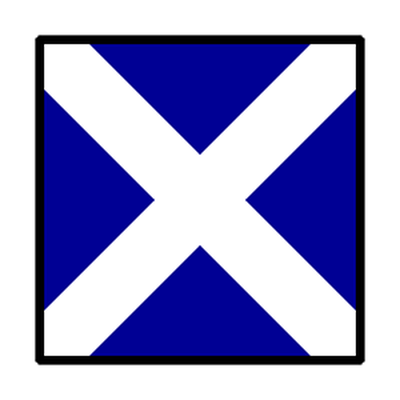
N - November & O - Oscar
-
Nautical mile: Measurement equivalent to 6076 feet.
-
Oil skins: Waterproof, dungaree-style over-trousers.
-
Outboard Engine: An engine that is mounted to the transom of a boat that has a self-contained engine block.
-
Outboard Well: A recessed area just forward of the outboard engine mounting.
-
Outboard: Toward or beyond the boat's sides.
P - Papa & Q - Quebec
-
Passive Gears: See Fixed Gear.
-
Pelagic Species: Fish that either live close to the surface or in mid-water such as herring and mackerel.
-
Port: The left side of a boat when looking forwards towards the bow.
-
Pots: Traps which are baited and left on the ocean floor, usually to catch crabs and lobsters. Can be made of wire mesh, word or plastic with netting.
-
Propeller: Also known as a ‘Prop’, a rotating device that is driven by the engine to move a boat through the water.
-
Purse seining: A fishing technique that uses a large net to encircle a school of fish which is then closed at the bottom before being hauled on board.
R - Romeo
-
Rigging: Any of the lines and wires that support the mast or spar.
-
Rigid Inflatable Hull Boat: Also known as a ‘RIB’, an inflatable boat with sponsons built around a rigid hull.
-
Rubrail: A protective rail around the hull of a boat designed to absorb some of the impact from contact with dock pilings. Also used to conceal the join between the hull and the deck.
-
Rudder: A vertical board or plate for steering a boat.
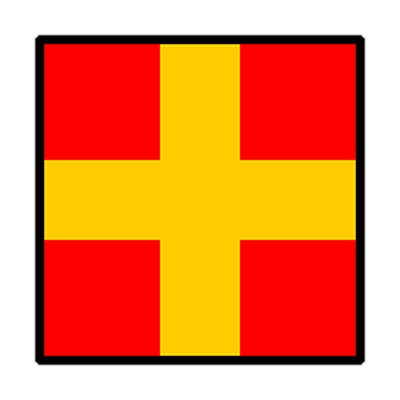
S - Sierra
-
Scouting: Term used for searching for a good area to fish with a tow (e.g. consistent depth with a good bottom and free of fixed gear).
-
Screw: Another name for a boat's propeller.
-
Scuppers Drain holes on deck; usually in the deck itself or the toerail.
-
Set net: A gillnet that is anchored .
-
Sheer Line: The outline of a boat’s deck at the gunwale.
-
Skiff. A small, powered boat often used with purse seining vessels to assist with the process of pursing.
-
Sonar: An electrical device used either locate fish or to determine depth of water.
-
Spring Line: Dock lines used to prevent a boat from moving forward and aft.
-
Sponson: A projection on the side of a boat either for stability or to act as a securing point for equipment.
-
Squall: A sudden wind often accompanied by rain.
-
Starboard: The right hand side of a boat when looking forward.
-
Stern Line: Dock line secured to the stern of a boat.
-
Stern: The back, or aft, of a boat.
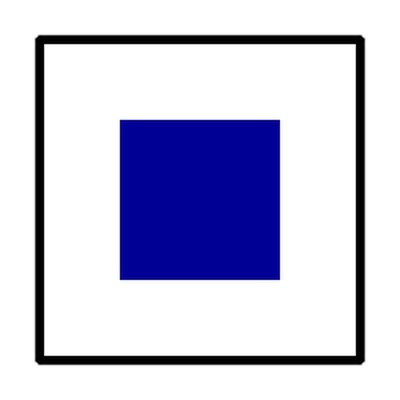
T - Tango & U - Uniform
-
Tickler: A chain that is dragged along the sea floor as a means of driving fish upwards into nets.
-
Tiller: A handle that is connected to the rudder(s) or a small outboard which is used to steer a boat.
-
Toerail: A rail around the outside edge of a boat’s deck near where the hull sides meet the deck.
-
Topsides: The sides of a boat between the waterline and the deck.
-
Transom: The aft-most section of a boat connecting the starboard and port sections of the hull.
-
Trawling: A fishing method that involves dragging an open-mouthed net behind the vessel.
-
Trimaran: Any boat with three hulls.
V - Victor & W- Whisky
-
V-Berth: A Berth that is situated in the bow (or ‘V’) of a vessel.
-
Vessel Monitoring System (VMS): A legal requirement for fishing vessels under EU law, this is a form of satellite tracking system using transmitters.
-
Waterline Length: The length of the hull where it sits in the water, from stern to bow; also known as LWL.
-
Waterline: The line around a boat’s hull where it sits the water.
-
Way: The direction of a boat in the water such as leeway, headway or sternway.
-
Winch: Mechanism for hauling the dredge/net.
-
Windward: The direction from which the wind is coming.
X- X Ray & Y - Yankee
Z - Zulu
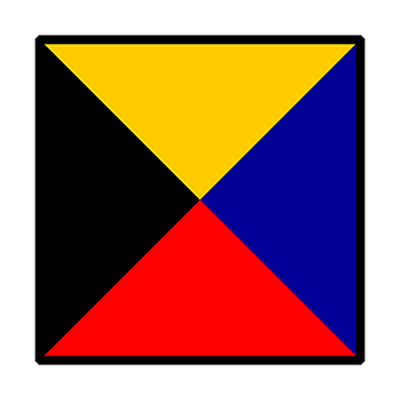
Find a Fishing Boat with FAFB
You can find plenty of boats for sale across our website from Gill Netters to Steel Trawlers, Dinghies and Inflatables to RIBs and Tenders. If you have any questions about any of the terms used in the ads listed on our site then don't hesitate to get in touch; we'd be happy to help explain.
Trusted by fishermen since 1999, Find a Fishing Boat receives between 5 and 6 million page views per month and is one of the UK's best known classified directories for buying and selling new and used boats.


